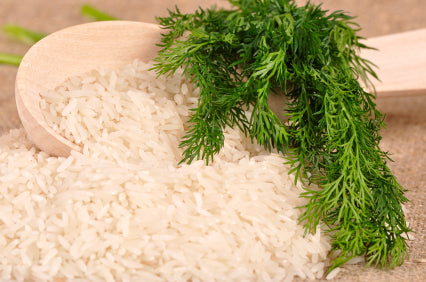Favorite Food Fridays: Ghormeh Sabzi
Considered the national dish of Iran, the tradition and history of Ghormeh Sabzi ("stewed greens') dates back to at least 500 to 1000 years. Served as a main dish in Iranian households for hundreds of years and also as a meal for family members returning after long bouts away from home, the aromatic Persian herb stew is a popular Iranian food not only in Iran, but also in Iraq and Azerbaijan.
Though not the most visually pleasing of dishes, Ghormeh Sabzi makes up its lack of aesthetics with a taste unlike anything you've had before. Consisting of crisp and flavorful ingredients such as cilantro, green onions, leeks, parsley, shambalileh (dried fenugreek), and sauteed herbs (kale, turnip greens, mustard greens), the cooking process for Iran's national delicacy can be cooked in various ways with various herbs, beans, and vegetables, but every method such as sauteing, stewing, or pressure cooking (though many people prefer a slow cooker for optimum zing), all results in the same, distinct taste.

Traditionally served atop Persian rice, aka: "polow", (made with plain yogurt, Basmati rice, and saffron threads), or "tahdig" (the layer of caramelized, twice-cooked rice that crisps at the bottom of the cooking pot), and often accompanied with lavash bread, this green herb stew is an Iranian food that is deliciously pungent and a dish that will never disappoint your taste buds. And aside from the blend of spices and rice that make up Ghormeh Sabzi, this mixture is also cooked with yellow or red onions, kidney beans or black-eyed peas, beef or lamb seasoned with tumeric, dried limu-omani (Persian limes) and sometimes potatoes as a substitute for beans--so not only are you tasting an abundance of herbs that will awaken your senses, you're also tasting an assortment of ingredients that compliment this already appealing, untouched Iranian cuisine.
If you're feeling adventurous and wish to concoct a dish that you've never made before, trying your hand at a pot of Ghormeh Sabzi is a wonderful meal idea for anytime.
Kalamala also carries ready to eat Ghormeh Sabzi as well as a pre-packaged Ghromeh Sabzi herb mixture.


 meat--are seasoned with Persian spices such as cinnamon and saffron. Indeed, the importance of palatable and unique styles of cooking is vital to Persian food. And North of Iran, a favored meze (or appetizer) called
meat--are seasoned with Persian spices such as cinnamon and saffron. Indeed, the importance of palatable and unique styles of cooking is vital to Persian food. And North of Iran, a favored meze (or appetizer) called  Cultivated widely in the Iranian province of South Khorasan (especially in Qaen and Birjand), the use for the zereshk berry extends far beyond hot rice and chicken dishes and lends itself to other culinary recipes for
Cultivated widely in the Iranian province of South Khorasan (especially in Qaen and Birjand), the use for the zereshk berry extends far beyond hot rice and chicken dishes and lends itself to other culinary recipes for